Blask’s approach to Relative Market Share in the iGaming industry
Blask’s Relative Market Share approach lets iGaming brands track performance against specific competitors, not just the market leader. Through Blask Index, it monitors real-time search interest, aiding brands in adapting strategies and focusing on direct competition and growth.
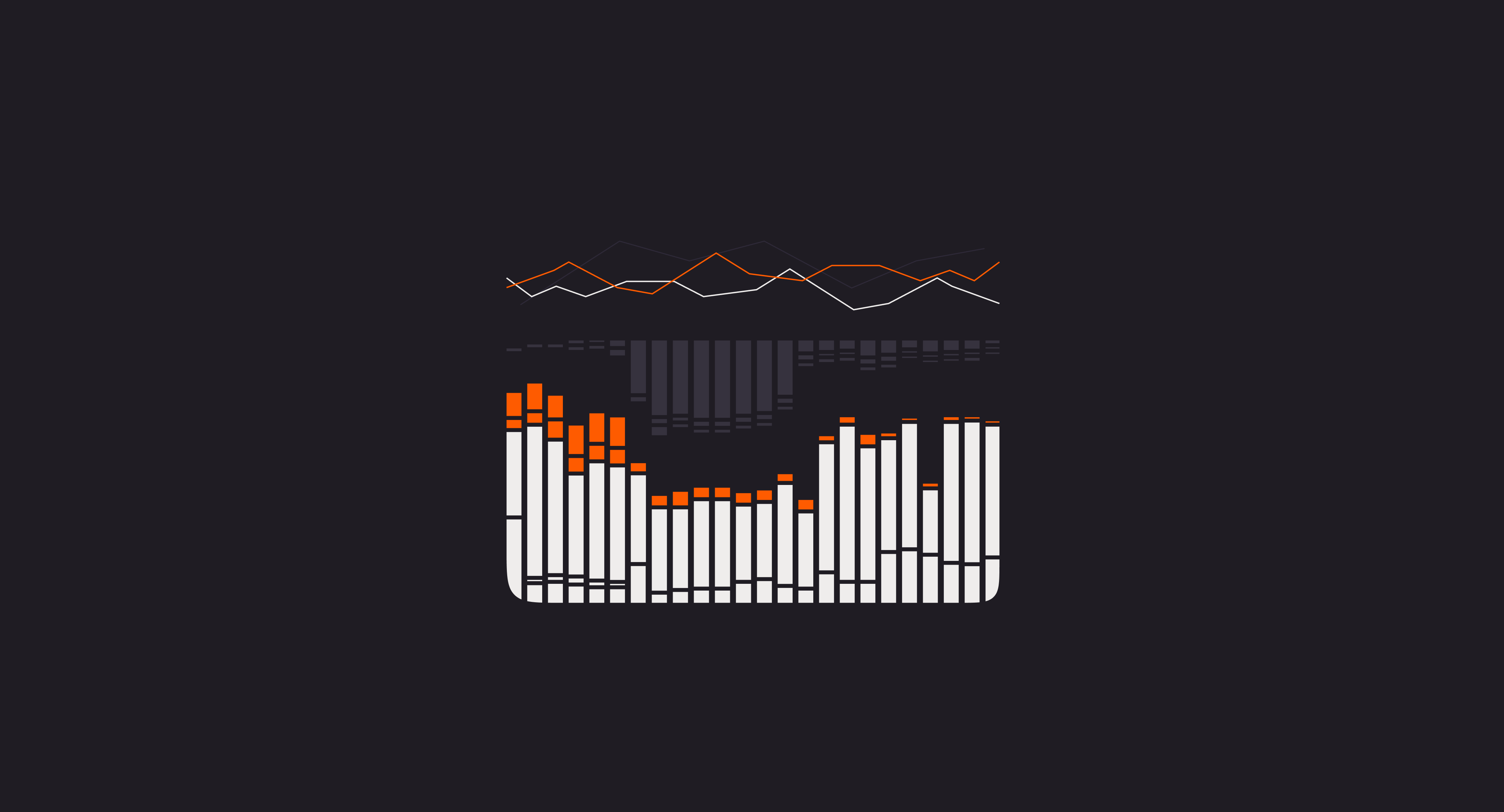
A clear understanding of your brand's position matters greatly. One of the key metrics used to gauge this is Relative Market Share (RMS). Unlike traditional market share, which measures absolute dominance, RMS provides insight into how well a brand is performing relative to its closest competitors and the whole market.
For Blask, Relative Market Share is not just about raw data but about capturing the real dynamics of the iGaming market.
Traditional vs. Blask’s Methodology.
Traditionally, Relative Market Share is calculated by comparing a brand’s share against the market leader. For example, if a competitor holds 30% of the market and your brand holds 15%, your RMS is 50% of the leader's. This gives a useful snapshot, but it doesn’t tell the whole story.
Blask goes beyond this basic calculation.
Blask’s approach to Relative Market Share allows for flexible comparison methods, offering the ability to calculate market share both as a percentage of the entire market (100%) and within a selected group of brands.
You can choose any set of brands and analyze how they compete against each other as if they made up the entire market.
This method is particularly useful for companies looking to benchmark their performance against specific competitors or explore niche market dynamics, offering insights into how brands would stack up in a more focused, brand-specific competition.
How to use Relative Market Share in Blask.
Analyze Market Share without absolute values.
Blask’s Relative Market Share (RMS) metric allows you to track a brand’s Share of Search interest relative to its competitors using our proprietary Blask Index. This provides a clear understanding of how much attention one brand is receiving in comparison to others. It's particularly useful for tracking performance over time and understanding how a brand stands in terms of visibility, no matter how large or small the market is.
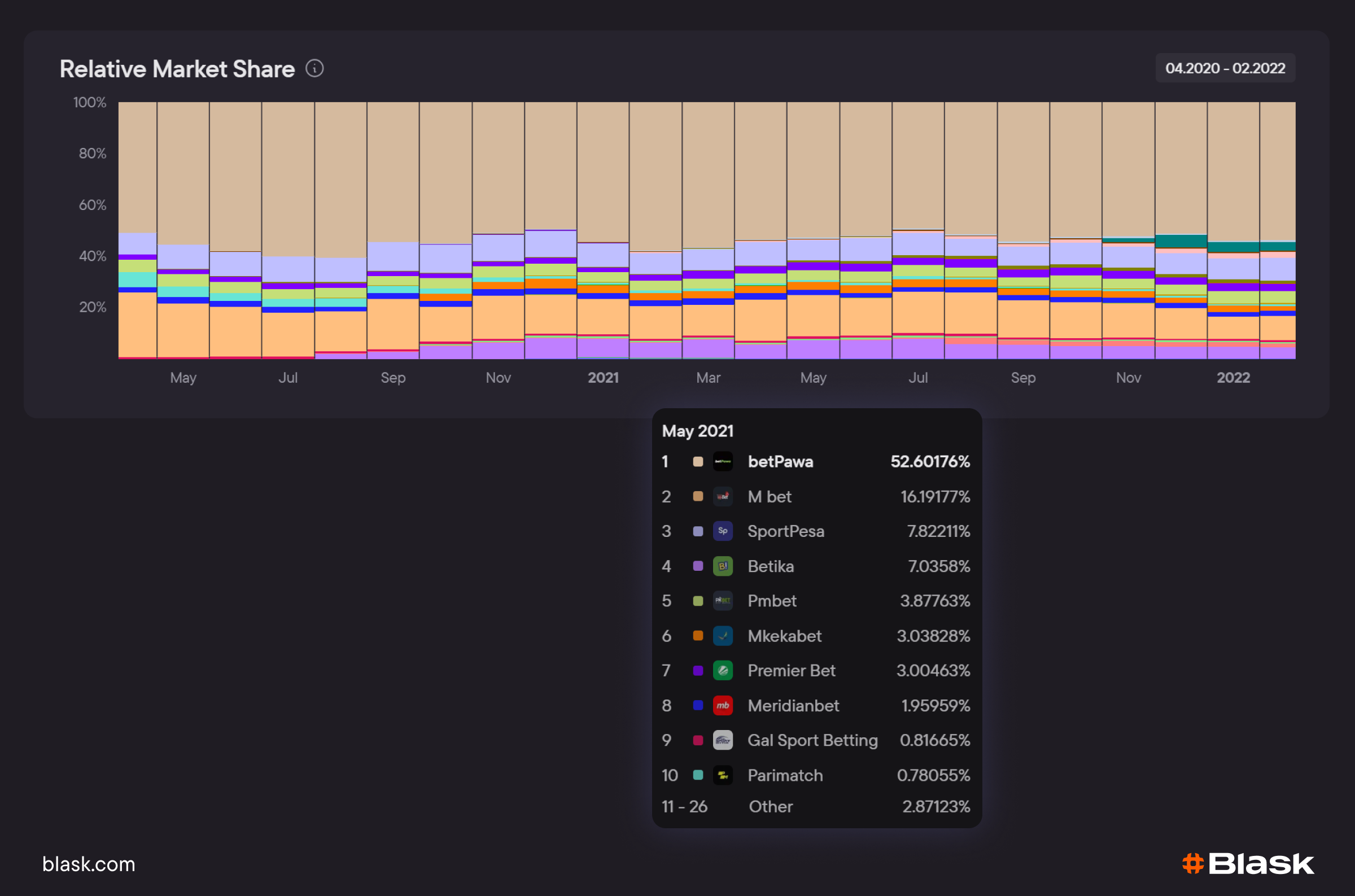
We calculate RMS through Blask Index, which you'll find explained in greater detail later in this article—be sure to read on for more insights!
Additionally, market conditions can fluctuate — the overall market might be expanding or shrinking. As a result, a brand could see growth in absolute terms, such as the total number of players or searches, but still lose relative market share if competitors are growing faster. Blask’s Relative Market Share captures these nuances, helping you see how your brand compares to others.
On the country page, the Relative Market Share chart by default shows 100% of the market and includes all brands operating in that country. To focus on specific brands, simply find the brand you’re interested in (for example, your own) and track its market share dynamics over time. This gives you a clear view of how your brand’s visibility is evolving in relation to the overall market and its competitors.
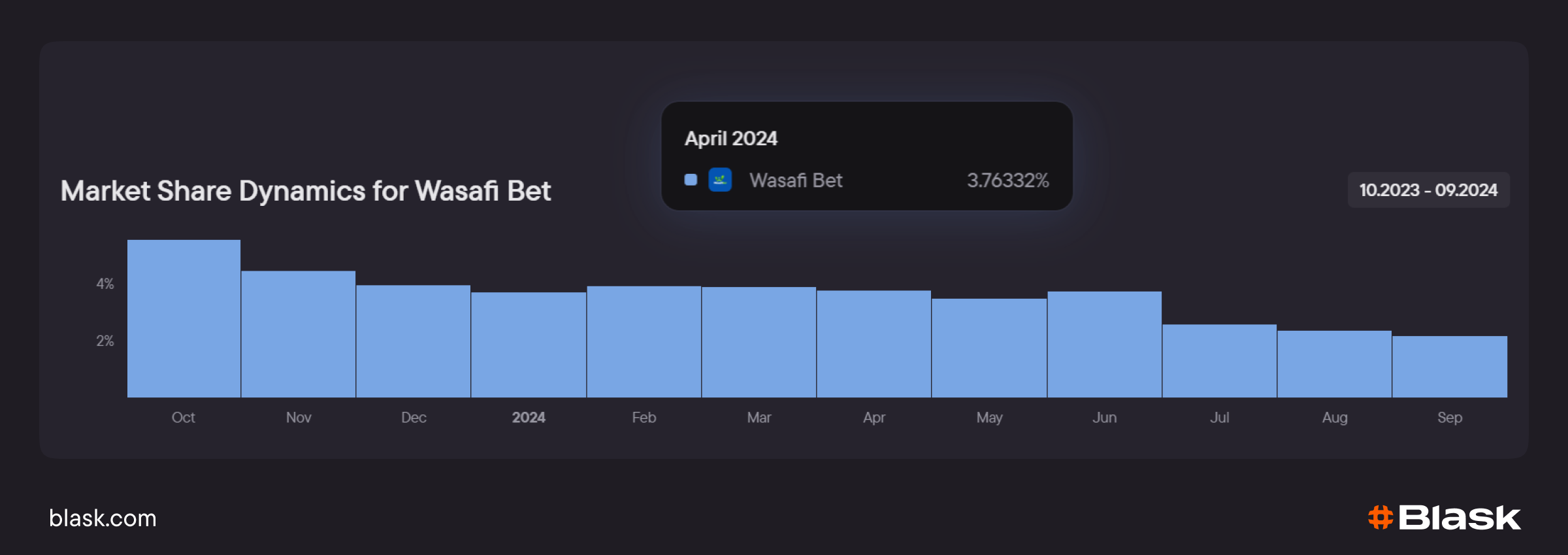
On the brand page, you can dive even deeper by viewing the Relative Market Share chart for just one brand. This graph shows a simple scale from 0 to 100, without any other brands present, allowing you to focus solely on the performance of that specific brand. By removing the noise of other competitors, you can clearly track how this brand's relative visibility is changing over time.
Track competition within a group of brands.
Blask’s Relative Market Share also lets you select a specific group of brands to compare their search interest directly.
This feature is ideal for tracking the performance of your closest competitors. By focusing on a specific set of brands, you can analyze how they compete with one another as if they made up the entire market. This way, you can monitor which brands are gaining or losing attention and adjust your strategy accordingly.
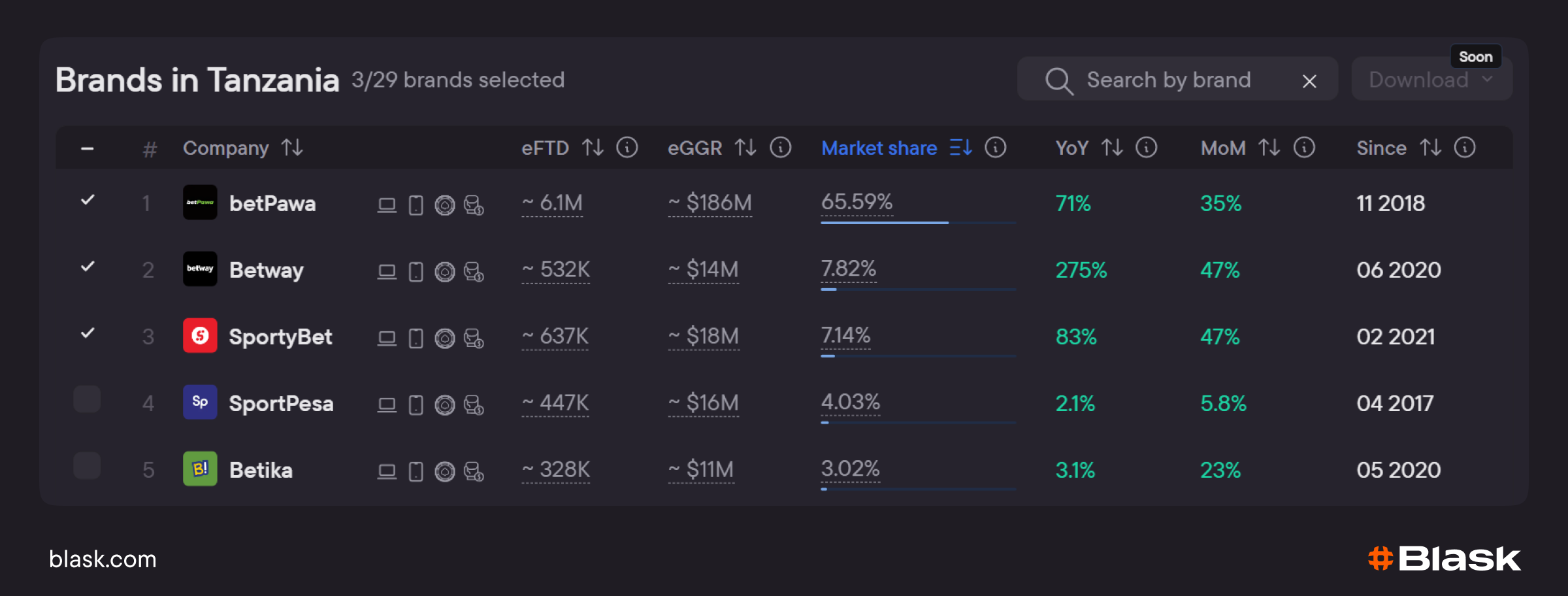
On the country page, you can further refine your analysis by selecting specific brands using checkboxes.
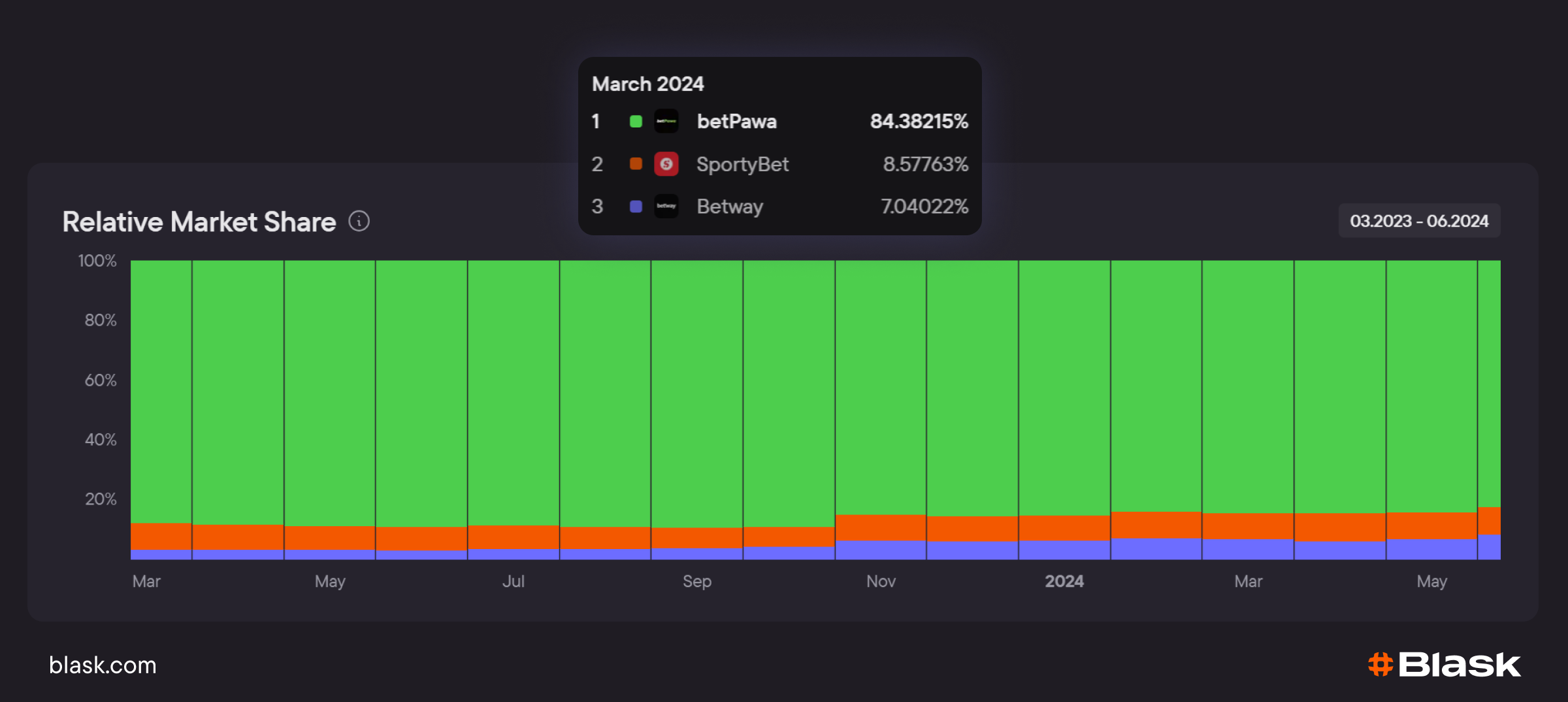
Once selected, the Relative Market Share chart will automatically adjust to reflect only these brands, treating them as if they collectively represent 100% of the market. This feature helps you filter out irrelevant noise and focus on targeted competition, whether you’re comparing your brand with emerging newcomers, established giants, or direct competitors in your niche.
On the brand page, you can immediately see a comparison chart featuring the closest competitors of that specific brand. Blask automatically identifies and displays these competitors on the Relative Market Share chart, making it easier to track how your brand’s share of search interest compares to the most relevant competitors in real-time. This streamlined view helps you stay focused on the most important competition without needing to search for them manually.
Use it the traditional way.
Since Blask is capable of calculating Relative Market Share for a group of brands, you can determine the RMS using the classic method, which involves comparing your brand with the market leader.
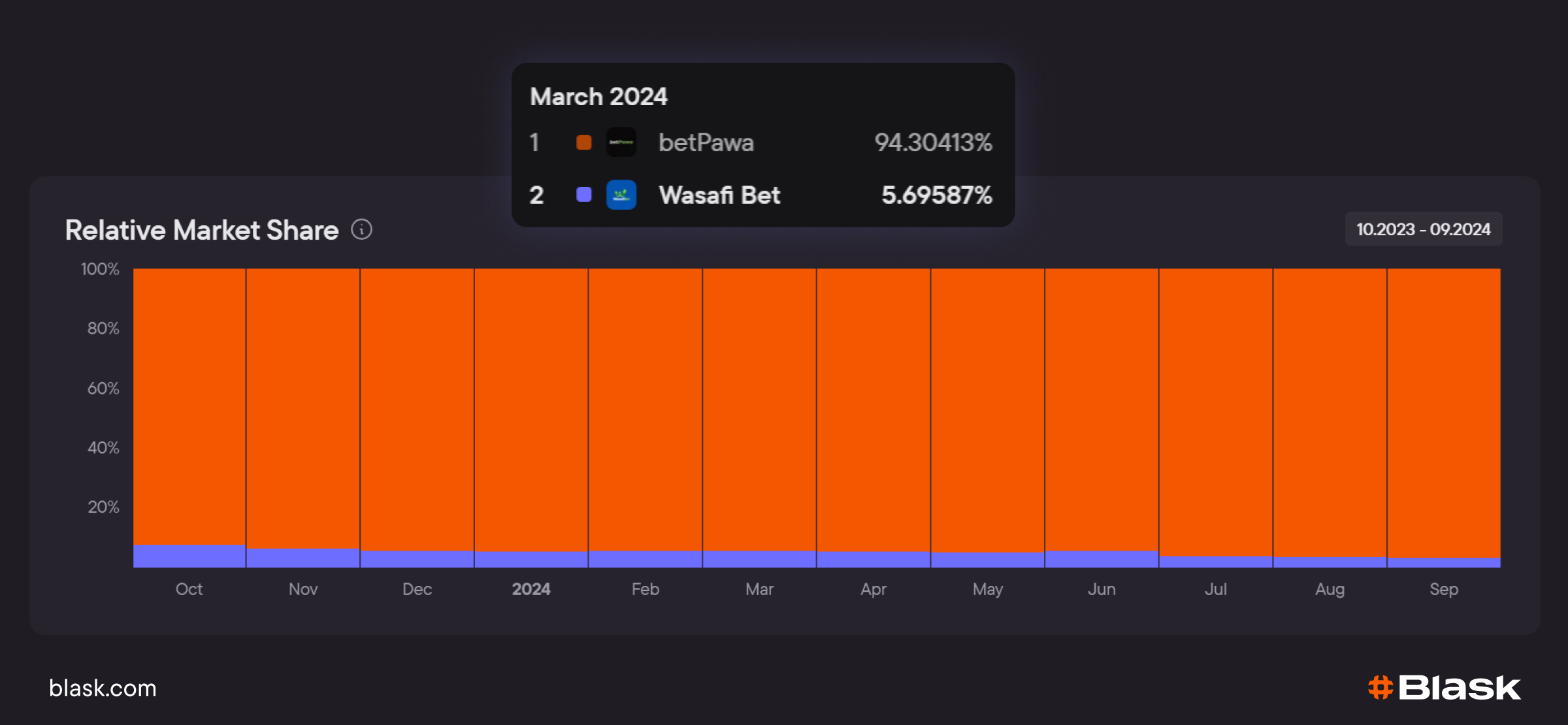
Simply select the top brand and any other brand, and the Relative Market Share chart will illustrate how these brands compete against each other and how much more growth is needed to reach the top.
How to increase your brand’s Relative Market Share.
To grow in absolute terms, you simply need to attract new players and retain your current ones. This is quite obvious.
However, to grow in relative terms, you need to achieve one of two things:
- Outpace the market growth. If the market has grown by 10% and you have also grown by 10%, you have essentially remained stagnant. You need to grow faster than those around you.
- Retain players more effectively than your competitors. During periods of declining interest in iGaming entertainment, the market contracts, and all brands lose players. If, in such conditions, you manage to retain your audience better, shrink at a slower rate than the market, or even achieve growth, then your Relative Market Share will increase.
How Blask calculates Relative Market Share.
Blask’s Relative Market Share is built on the foundation of the Share of Search metric. To calculate this, Blask uses data from various search engines to measure how often users search for each iGaming brand. These search volumes are then combined into Blask Index, which reflects the total number of searches for a specific brand. By summing all the Blask Indexes of all brands in a particular country, Blask can calculate Blask Index for that entire market.
Blask Index measures searches in absolute terms, displaying the actual number of searches for each brand. When Blask generates a Relative Market Share chart, it standardizes the Blask Index value for that country to 100%. This makes it easier to understand how different brands perform relative to one another. Each brand’s RMS is calculated based on its share of the total Blask Index value in that market, and it's expressed as a percentage of the overall market.
One of the key challenges Blask faces when calculating Blask Index is ensuring the accuracy of search data. Search engines like Google often present data with noise, such as irrelevant searches or inconsistencies over time. To address these issues, Blask has developed proprietary algorithms that filter out irrelevant searches, correct for variations (like typos or alternate spellings), and average out inconsistencies. This process helps ensure the data used to calculate Blask Index is as accurate and relevant as possible.
By overcoming these challenges, Blask provides reliable and real-time Blask Index and Relative Market Share calculations, enabling brands to track their search interest and market positioning with precision and confidence.
Unlock your iGaming potential with Blask!
Blask empowers you to make data-driven decisions, optimize marketing strategies, and drive significant GGR increases by providing unparalleled clarity about the iGaming market and your performance.
Curious about our precision? Discover our article "What is Blask?" and how Blask's cutting-edge technology is transforming iGaming analytics.
Ready to experience Blask in action?
Request a personalized demo with full access to data tailored to your niche and objectives. Fill out the form at blask.com to help us prepare use cases specific to your needs.
Need assistance?
Our support team is always here to help. Click the chat icon in the bottom right corner of your screen to connect with us instantly and get the answers you need.